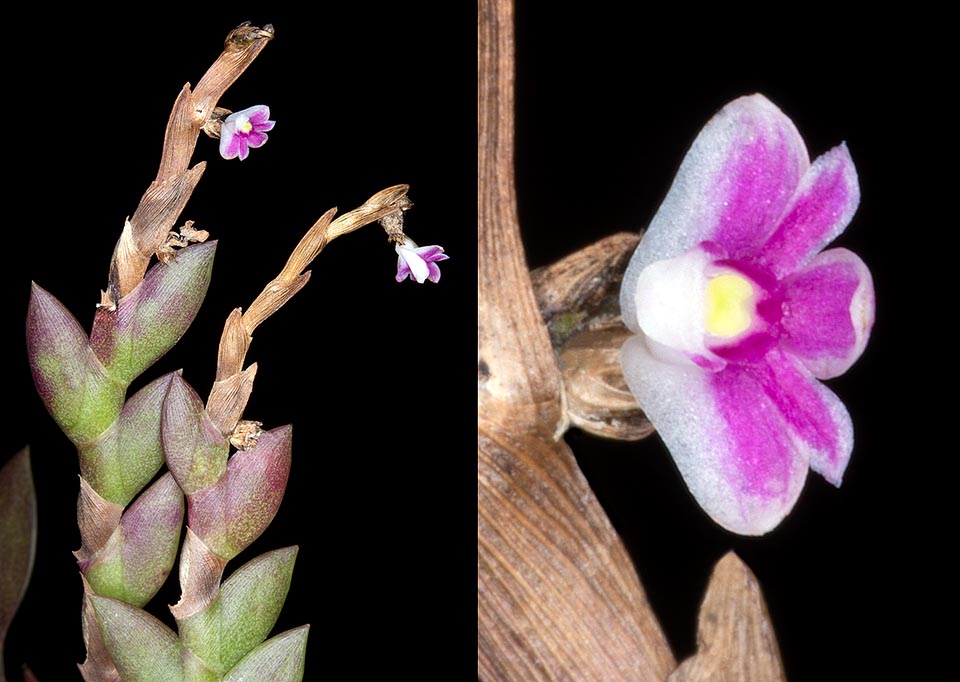Family : Orchidaceae

Text © Pietro Puccio

English translation by Mario Beltramini
The species is native to Borneo where it lives on the trees of the humid forests at low altitudes.
The name of the genus is the combination of the Greek substantives “δένδρον” (dendron) = tree and “βίος” (bios) = life, with reference to the numerous species of the genus living on the trees; the specific name is the combination of the Greek prefix “ψευδής” (pseudés) = false and of the name of the species Dendrobium aloifolium (Blume) Rchb.f. (1861).
The Dendrobium pseudoaloifolium J.J.Wood (1984) is an epiphytic species with close stems, 8-12 cm long, provided of leaves, but the apical part which has none, alternate, distichous, imbricate, equitant (at a single face with lamina folded in two along the central vein), elliptical with acuminate apex, about 1 cm long and 0,5 cm broad, fleshy, of green colour suffused with reddish brown. Inflorescences generally from the apical nodes without leaves with 1-3 flowers, of about 5 mm of diameter, of pale purple colour with whitish margins. Ovate dorsal sepal with acute apex, 2 mm long and 1,5 mm broad, ovate-triangular lateral sepals with obtuse apex, 3,5 mm long and 1,5 mm broad, united at the base to form a sort of spur (mentum) with obtuse apex, about 2 mm long. Oblong petals with acute apex, about 2 mm long and 1 mm broad, trilobed labellum, 3,5 mm long and 1,5 mm broad, and 2 mm long column.

Beautiful miniature orchid almost unknown in cultivation, the Dendrobium pseudoaloifolium is an epiphyte of Borneo humid forests. Alternate leaves, distichous, imbricate, fleshy, with lamina folded in two along the central vein. They do not exceed the 10 mm and the flowers are of only 5 mm of diameter © Giuseppe Mazza
Miniature orchid almost unknown in cultivation, present almost exclusively in specialized collections. Requires a partially shaded and well aerated position, medium-high temperatures, 20-32 °C, almost constant all over the year, high humidity, 70-85%, and regular waterings, but without stagnations, utilizing rain water, demineralized or by reverse osmosis. It may be mounted in pots or baskets, with draining compost based on medium-sliced bark fragments, or moounted on pieces of bark or rafts of cork or of roots of arborescent ferns coverd by sphagnum.
The species is reported in the appendix II of the CITES (species whose trade is internationally ruled).
Synonyms: Aporum pseudoaloifolium (J.J.Wood) M.A.Clem. (2003).
→ For general notions about ORCHIDACEAE please click here.
